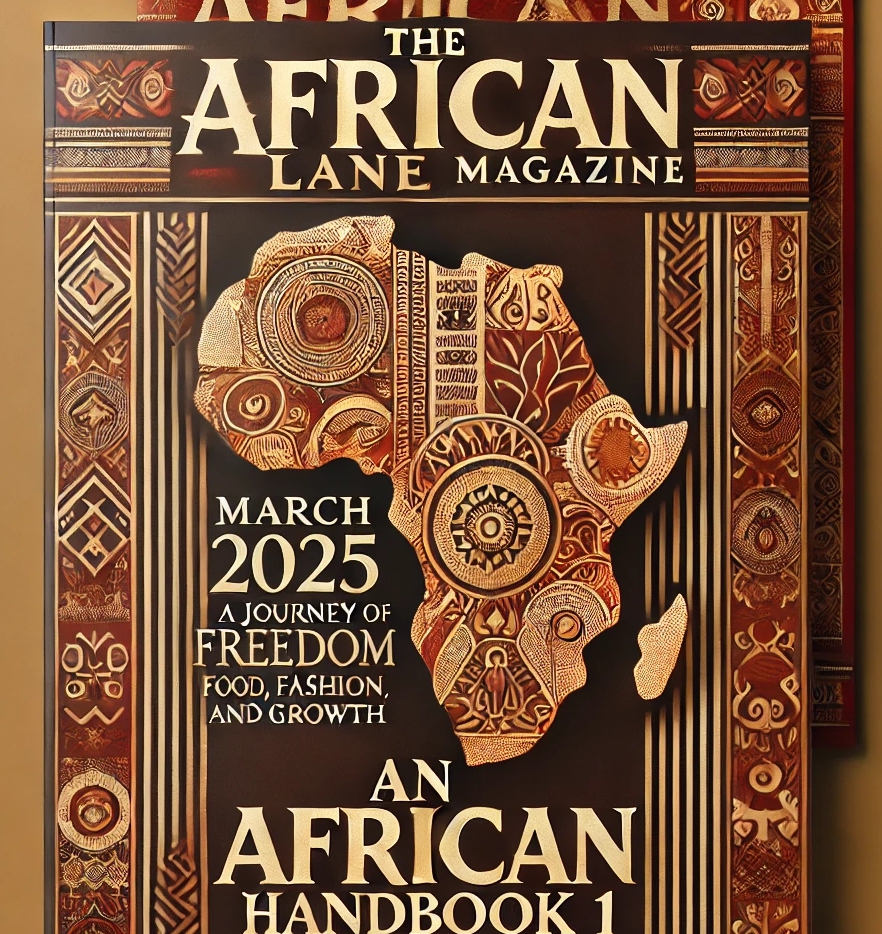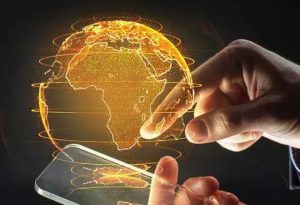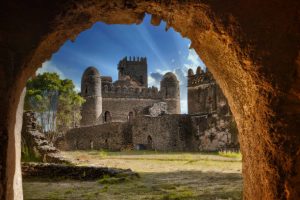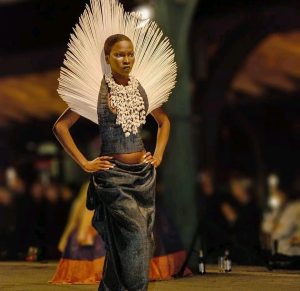Ghana: Garden City of West Africa

Ghana, country of western Africa, situated on the coast of the Gulf of Guinea. Although relatively small in area and population, Ghana is one of the leading countries of Africa, partly because of its considerable natural wealth and because it was the first black African country south of the Sahara to achieve independence from colonial rule.
Ghana is a multinational state, home to a variety of ethnic, linguistic and religious groups. According to the 2010 census, the vast majority, or 71.2%, of Ghana’s population was Christian, 17.6% was Muslim, and 5.2% practised traditional faiths. Ghana’s diverse geography and ecology ranges from coastal savannahs to tropical rain forests. It is a unitary constitutional democracy led by a president who is both head of state and head of the government. Ghana’s growing economic prosperity and democratic political system have increased its regional influence in West Africa.

Boti Falls is an integral part of Ghana. According to history, Boti Falls is a twin waterfall, specifically male and female which represents the upper and lower falls
It is a member of the Non-Aligned Movement, the African Union, the Economic Community of West African States (ECOWAS), Group of 24 (G24) and the Commonwealth of Nations.
| Capital
and largest city
|
Accra 5°33′N 0°12′W |
|---|---|
| Official languages | English[1][2] |
| Recognised national languages | |
| Ethnic groups | |
| Religion |
|
| Demonym(s) | Ghanaian |
| Government | |
| • President | Nana Akufo-Addo |
| • Vice-President | Mahamudu Bawumia |
| • Speaker of Parliament | Alban Sumana Kingsford Bagbin |
| • Chief Justice | Kwasi Anin-Yeboah |
| Legislature | Parliament |
| Independence from the United Kingdom | |
| • Dominion | 6 March 1957 |
| • Republic | 1 July 1960 |
| • Current constitution | 28 April 1992 |
| Area | |
| • Total | 239,567 km2 (92,497 sq mi) (80th) |
| • Water (%) | 4.61 (11,000 km; 4,247 mi2) |
| Population | |
| • 2020 estimate | 31,072,940[5] (47th) |
| • 2010 census | 24,200,000[6] |
| • Density | 101.5/km2 (262.9/sq mi) (103rd) |
| Currency | Cedi (GHS) |
| Time zone | UTC (GMT) |
| Date format | dd/mm/yyyy mm/dd/yyyy |
In addition to being known for its lush forests, diverse animal life, and miles of sandy beaches along a picturesque coast, Ghana is also celebrated for its rich history—its habitation possibly dating from 10,000 BCE—and as a fascinating repository of cultural heritage.
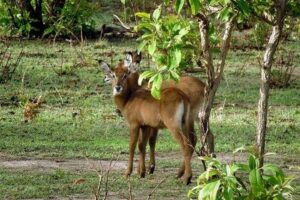
This is the largest wildlife park in Ghana. Tourists can see several different types of animals including roan antelope, buffalo, elephants, hyenas, leopards etc. They may also spot lions from time to time. The park is home to more than 250 species of birds which is great for bird enthusiasts. If you can, try to visit the park during the dry season which lasts from January to March to catch most of the animals as they come to drink water.
The country takes it name from the great medieval trading empire that was located northwest of the modern-day state until its demise in the 13th century. Direct sea trade with Europe, established in the 15th century, had much impact on the area’s inhabitants, many of whom actively traded with the Portuguese, Dutch, British, and other Europeans. Forts and castles, many of which still dot the Ghanaian coast today, were constructed by Europeans to protect their trade interests. Although trading was originally centred on the gold that was readily available in the area (and from which the future British colony the Gold Coast would take its name), the focus shifted to the lucrative slave trade in the 17th century.
The area later became known for growing cacao, the source of cocoa beans. Introduced there in the late 19th century, cacao continues to provide an important export for Ghana.
Modern-day Ghana, which gained its independence on March 6, 1957, consists primarily of the former Gold Coast. The colony’s drive for independence was led by nationalist and Pan-African leader Kwame Nkrumah, who viewed Ghana’s sovereignty as being important not only for the Ghanaian people but for all of Africa, saying “Our independence is meaningless unless it is linked up with the total liberation of the African continent.” Indeed, more than 30 other African countries, spurred by Ghana’s example, followed suit and declared their own independence within the next decade.
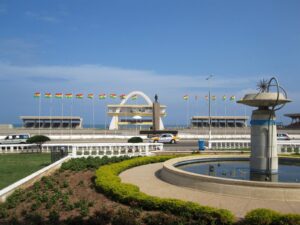
Independence Square (also known as “Black Star Square”) is one of the most popular tourist attractions in Ghana. It was built in 1961 and it contains monuments to Ghana’s independence struggle, including the Independence Arch, Black Star Gate, and the Liberation Day Monument. The Independence Square is the second largest City Square in the world after the Tiananmen Square in Beijing, China. With a capacity of about 30,000 people, the Black Star Square is a site for Ghana’s Independence Day parades which falls on the 6th of March every year and for all major national public gatherings and national festivals
Nkrumah quickly laid the groundwork for fiscal independence within the new country as well, embarking on many economic development projects. Unfortunately, decades of corruption, mismanagement, and military rule stymied growth and achievement. By the 1990s, though, the country’s state of affairs began showing signs of improvement, and Ghana is now held up as an example of successful economic recovery and political reform in Africa.
Ghana’s administrative capital is the coastal city of Accra. Originally founded on the site of several Ga settlements, Accra developed into a prosperous trading hub; today it serves as the commercial and educational centre of the county. Kumasi, another prominent commercial centre, is located in the south-central part of the country. Known as the “Garden City of West Africa,” Kumasi is also the seat of the king of the Asante people, the vestige of an empire (see Asante empire) that existed in the 18th and 19th centuries.

Accra
Ghana is an average natural resource enriched country possessing industrial minerals, hydrocarbons and precious metals. It is an emerging designated digital economy with mixed economy hybridisation and an emerging market with 8.7% GDP growth in 2012. It has an economic plan target known as the “Ghana Vision 2020”. This plan envisions Ghana as the first African country to become a developed country between 2020 and 2029 and a newly industrialised country between 2030 and 2039. This excludes fellow Group of 24 member and Sub-Saharan African country South Africa, which is a newly industrialised country. Ghana’s economy also has ties to the Chinese yuan renminbi along with Ghana’s vast gold reserves.
In 2013, the Bank of Ghana began circulating the renminbi throughout Ghanaian state-owned banks and to the Ghana public as hard currency along with the national Ghana cedi for second national trade currency. Between 2012 and 2013, 37.9 percent of rural dwellers were experiencing poverty whereas only 10.6 percent of urban dwellers were.
Urban areas hold greater opportunity for employment, particularly in informal trade, while nearly all (94 percent) of rural poor households participate in the agricultural sector.
The state-owned Volta River Authority and Ghana National Petroleum Corporation are the two major electricity producers. The Akosombo Dam, built on the Volta River in 1965, along with Bui Dam, Kpong Dam, and several other hydroelectric dams provide hydropower. In addition, the Government of Ghana has sought to build the second nuclear power plant in Africa.
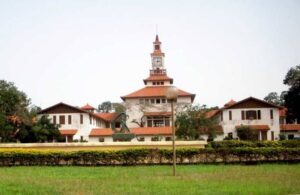
The Ghana Stock Exchange is the 5th largest on continental Africa and 3rd largest in sub-saharan Africa with a market capitalisation of GH¢ 57.2 billion or CN¥ 180.4 billion in 2012 with the South Africa JSE Limited as first.[123] The Ghana Stock Exchange (GSE) was the 2nd best performing stock exchange in sub-saharan Africa in 2013.
Ghana also produces high-quality cocoa. It is the 2nd largest producer of cocoa globally, and was projected to become the world’s largest producer of cocoa in 2015.
The country is classified as a middle income country. Services account for 50% of GDP, followed by manufacturing (24.1%), extractive industries (5%), and taxes (20.9%).
The Ghana economy is an emerging digital-based mixed economy hybrid with an increasing primary manufacturing and export of digital technology goods along with assembling and exporting automobiles and ships, diverse resource rich exportation of industrial minerals, agricultural products primarily cocoa, petroleum and natural gas, and industries such as information and communications technology primarily via Ghana’s state digital technology corporation Rlg Communications which manufactures tablet computers with smartphones and various consumer electronics.Urban electric cars have been manufactured in Ghana since 2014.

Ghana produces and exports an abundance of hydrocarbons such as sweet crude oil and natural gas. The 100% state-owned filling station company of Ghana, Ghana Oil Company (GOIL) is the number 1 petroleum and gas filling station of Ghana and the 100% state-owned state oil company Ghana National Petroleum Corporation (GNPC) oversees hydrocarbon exploration and production of Ghana’s entire petroleum and natural gas reserves. Ghana aims to further increase output of oil to 2.2 million barrels (350,000 m3) per day and gas to 34,000,000 cubic metres (1.2×109 cu ft) per day.
It’s Jubilee Oilfield which contains up to 3 billion barrels (480,000,000 m3) of sweet crude oil was discovered in 2007, among the many other offshore and inland oilfields in Ghana.[136] Ghana is believed to have up to 5 billion barrels (790,000,000 m3) to 7 billion barrels (1.1×109 m3) of petroleum in reserves, which is the fifth largest in Africa and the 21st to 25th largest proven reserves in the world. It also has up to 1.7×1011 cubic metres (6×1012 cu ft) of natural gas in reserves, which is the sixth largest in Africa and the 49th largest natural gas proven reserves in the world. Oil and gas exploration off Ghana’s eastern coast on the Gulf of Guinea is ongoing, and the amount of both crude oil and natural gas continues to increase. The Government of Ghana has drawn up plans to nationalise Ghana’s entire petroleum and natural gas reserves to increase government revenue.
Known for its industrial minerals, Ghana is the world’s 7th largest producer of gold, producing 130 metric tons in 2019, and is now the largest producer in Africa ahead of South Africa. Ghana has the 9th largest reserves and the 9th largest production rate of diamonds in the world. Industrial minerals and exports from South Ghana include gold, silver, timber, diamonds, bauxite, and manganese. South Ghana also has mineral deposits of barite, basalt, clay, dolomite, feldspar, granite, gravel, gypsum, iron ore, kaolin, laterite, limestone, magnesite, marble, mica, phosphates, phosphorus, rocks, salts, sand, sandstone, silver, slate, talc, and uranium that are yet to be fully exploited.The Government of Ghana has drawn up plans to nationalize Ghana’s entire mining industry to increase government revenues.
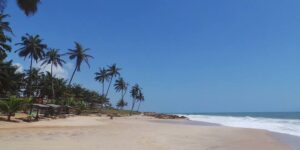
Food and drink
Ghanaian cuisine and gastronomy is diverse, and includes an assortment of soups and stews with varied seafoods and most Ghanaian soups are prepared with vegetables, meat, poultry or fish.[243] Fish is important in the Ghanaian diet with tilapia, roasted and fried whitebait, smoked fish and crayfish all being common components of Ghanaian dishes.
Banku (akple) is a common Ghanaian starchy food made from ground corn (maize),[243] and cornmeal based staples, kɔmi (kenkey) and banku (akple) are usually accompanied by some form of fried fish (chinam) or grilled tilapia and a very spicy condiment made from raw red and green chillies, onions and tomatoes (pepper sauce).Banku and tilapia is a combo served in most Ghanaian restaurants. Fufu is the most common exported Ghanaian dish, in that it is a delicacy across the African diaspora.
1st Image: Independence Square, Accra
Independence Square (also known as “Black Star Square”)
Independence Square (also known as “Black Star Square”)
Sources: Wikipedia, Britannica, Pinterest, travel magazine, google
